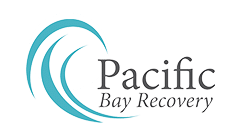The rate of teenage drug use is declining, with the usage of illegal drugs being lower than it has been in more than 20 years among teens, according to statistics. Despite the reduction in drug use, teenagers these days might still abuse and experiment with alcohol and drugs for a number of reasons.
Common Drugs That Are Used by Teenagers
There are multiple popular drugs that teenagers use, all with different rates of use and effects. Presently, the drugs that are most commonly used by teenagers include cocaine, marijuana, painkillers, stimulants, prescription drugs, crystal meth, heroin, hallucinogens, and inhalants, among others.
Marijuana
The use of marijuana by teenagers has decreased despite laws that legalize recreational marijuana use in a few states. Less than 6 percent of 12th-graders use marijuana on a daily basis, according to statistics. Also, National Survey on Drug Use data shows that 0.7 percent of 8th-graders and 3.4 percent of 10th-grade students use marijuana every day.
Cocaine
Among adolescents, cocaine use is less common than the use of marijuana. National Survey on Drug Use research performed by National Institute on Drug Abuse (NIDA) revealed that only 2.3 percent of 12th-graders, 1.5 percent of 10th-grade students, and 0.8 percent of 8th-grade students had used cocaine within the past year. Lower cocaine use rates in teenagers might be a result of limited availability, as compared with marijuana, as just 28 percent of 12th-graders feel it’d be simple to obtain it. Also, more than 85 percent of adolescents disapprove of experimenting with this drug, which might deter their use.
Stimulants
These are a category of drugs generally used to treat conditions like ADHD (attention-deficit hyperactivity disorder), and they’ll require a prescription. Abuse of attention-deficit hyperactivity disorder drugs might occur in teenagers. According to research by the NIDA, 4.5 percent of 12th-graders have used it not prescribed to them in the last year.
Prescription Drugs and Painkillers
Adolescent prescription drug use may involve narcotic painkillers. Roughly 3.4 percent of 12th-graders have taken prescription drugs in the last year, according to NIDA. Painkiller use in the prior year is reported by 0.6 percent of 8th-grade students, 1.1 percent of 10th-grade students, and 1.7 percent of 12th-grade students. The use of oxycodone is somewhat more common, with 0.8 percent of 8th-grade students, 2.2 percent of 10th-grade students, and 2.3 percent of 12th-grade students using it in the last year.
Synthetic Marijuana
Synthetic marijuana is made by spraying herbs using cannabinoid chemicals. Synthetic marijuana use caught the attention of the media in the year 2011 when 11.4 percent of high school seniors claimed they’d used the drug within the last year. Approximately 1.6 percent of 8th-grade students, 2.9 percent of 10th-grade students, and 3.5 percent of 12th-grade students report that they’ve used synthetic marijuana in the past year, according to NIDA.
Methylenedioxy-Methamphetamine
Generally, adolescents using methylenedioxy-methamphetamine is fairly uncommon, with only 2.2 percent of 12th-grade students claiming they have used it in the last year, according to the National Institute on Drug Abuse.
The drug is alluring to teenagers as a drug that’s used at nightclubs and parties. It causes a rush of happiness and makes teens who take it feel emotionally connected to other people. Also, it may be available in the form of tablets resembling candy, which may make it attractive to teenagers.
Hallucinogens
Hallucinogens are also called “acid.” The number of teenagers on acid is fairly low, with 3.2 percent of 12th-graders reporting using it in the last year, according to NIDA.
Also, hallucinogens include magic mushroom drugs that may cause abusers to go on “trips” where they might lose touch with reality and not be aware of their surroundings. Teenagers might use them because they enjoy those trips.
Inhalants
Inhalants have fumes that may cause a high, and they’re discovered in common household products, like nail polish remover, glue, and gas. Inhalants aren’t expensive and may be found around the home, which makes them fairly easy for teenagers to obtain. According to data from the NIDA, inhalant use is more prevalent among 8th-grade students than among 10th-graders and 12th-graders.
If your teenager needs treatment for drug use, make sure you check your teenager into a substance abuse treatment facility with a team of caring professionals prepared to offer support and answer all questions you might have about substance abuse treatment. Get in touch with a representative right away at (619) 350-8194 to learn more.


